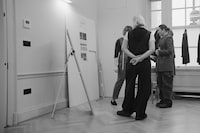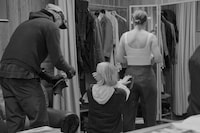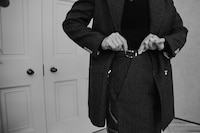Designer Annabel Ballance, stylist Karen Binns and tailor Antonia Ede combine forces on a custom suit for Lucy Beeden, design director of Kim Jones Studio, to reimagine both the process and the form of the storied silhouette
Corporate suiting has long shaped how and by whom power is worn, sharpening the body underneath to match the patriarchal structures it moves through. Women’s tailoring too often echoes these codes – contouring the female body not to defy these hierarchies, but to accommodate them. It’s exactly this sticky tension between gendered silhouette and power that sits at the heart of London-based designer Annabel Ballance’s recent project. In collaboration with stylist Karen Binns and tailor Antonia Ede of Montague Ede, the designer has crafted a custom suit for Lucy Beeden, design director of Kim Jones Studio, to reimagine both the process and the form of the storied silhouette.
Living in London, Ballance has long observed the silent language of status, authority, and control embedded in men’s suiting. “I’ve always been fascinated by the confidence of corporate men,” they explain, “and I wanted to create something that gave women that same power – without having to conform.” They found the ideal muse in Lucy Beeden, whom they met during their studies at the Royal College of Art. “Over tea, I shared my project – and it just made sense for her to be a part of it. She’s been a mentor and inspiration.”
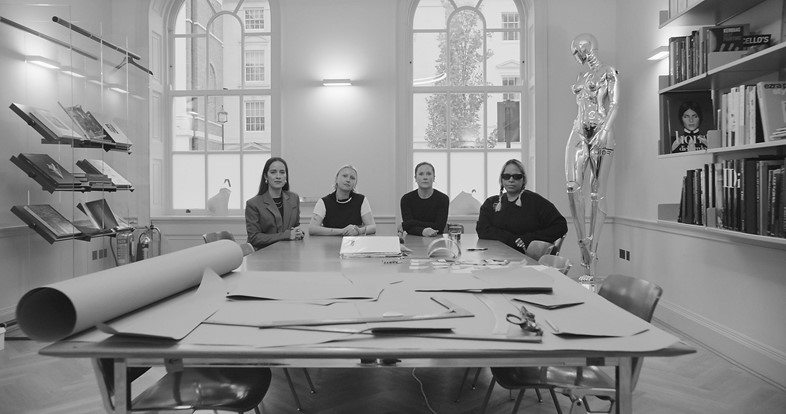
Rather than feminising the suit or undermining it through dramatic reinterpretation, Ballance approached the garment on its own terms – working within its structure to gently reorient its logic. Partnering with Ede, who trained within two Savile Row houses, offered them a means to study the historical design vocabulary of suiting – pressed wool, sharp shoulders, hidden fastenings – and then rephrase it. “She makes suits for men but understands what it means to navigate a male-dominated space as a woman,” says Ballance. “Her drive – balancing motherhood and running a business – inspired me.”
The process was rooted in a careful practicality from the outset: Ballance and Beeden sifted through her closet, talking through what she loved in her clothing and what didn’t quite work. “It was very intuitive and collaborative. Antonia took her measurements, and we built the suit around Lucy’s needs,” Ballance explains, “like finally giving her proper pockets!” Thoughtful, precise details – a discreet adjustable waistband, deep functional pockets – allow Beeden to embody the suit, and her power, with clarity and control.
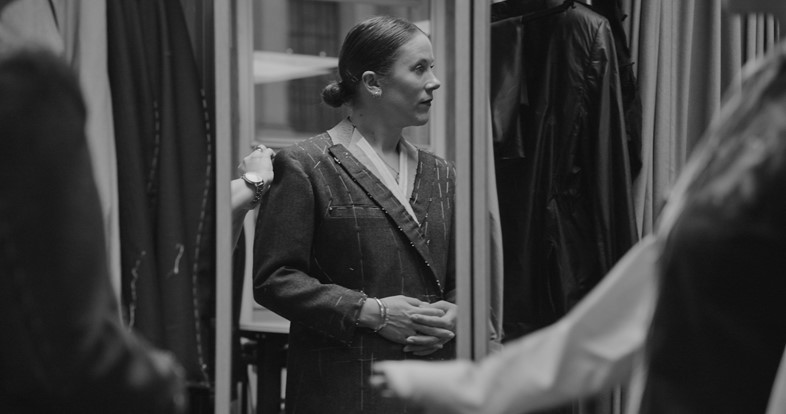
One of Ballance’s driving design tenets for the project was to slow the process down as much as possible: to create a suit with intention, from LVMH deadstock fabrics, that responded to the person within it and could then accompany them for years to come. “It’s about thoughtful design,” Ballance says. “Listening to what people actually need from their clothes.” The pace and fabric of the project echoed the tradition it sought to rework – imbuing the suit with the same sense of craft, legacy, and intention that has long been afforded to men’s tailoring, now redirected toward women’s suiting.
The project culminated in an striking portrait of Lucy Beeden wearing the suit, taken by Jackie Nickerson. What it captures so clearly is how Ballance’s design recalibrates power – not as dominance or display, but as the ability to inhabit one’s own form: fully, comfortably, and without compromise. Their approach to suiting doesn’t ask women to shrink, reshape, or translate themselves into a language not made for them, but treats the suit as a tool of inclusivity – cut with intention, worn with ease, and tapered to the nuances of the reality lived within it.



